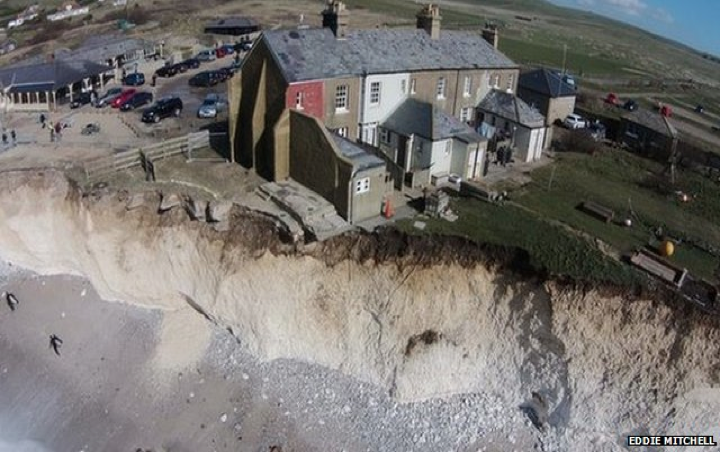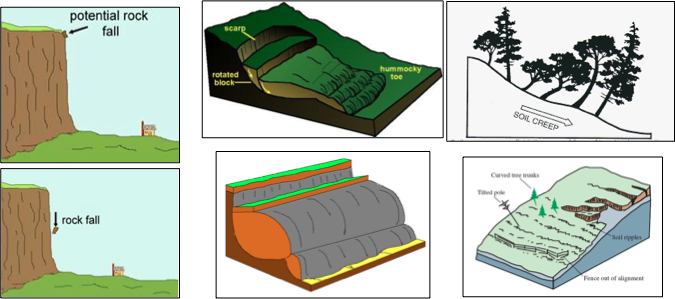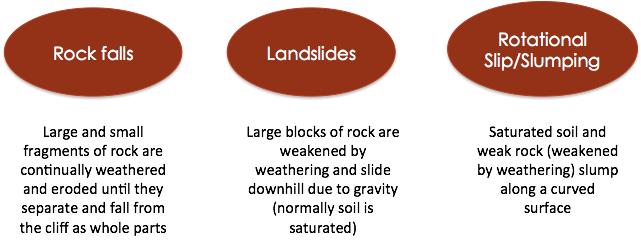Climate and Coastal Landscapes of Erosion
Measuring Erosion
As sea levels rise due to global warming, so too will coastal erosion. In southern counties of England, where the majority of people live, the threats are greatest. This is because much of the land is low lying, but also because a warmer climate also brings more extreme weather and storms.
Coastal Retreat
Impacts on coastal retreat:
- Rock type - Chalks and limestone can form steep cliffs. Clays and softer rock form large bays.
- Rock structure - A discordant coastline, where rocks are at an angle to the edge of the coastline, will erode at different rates.
- The shape of the coastline – Headlands are exposed to destructive waves. Bays are more sheltered from the wave energy, so erosion is slower.
- The type of wave - The amount of energy a wave has helps determine the rate of erosion.
Sub Areal Processes
- Talk about climate and its impact on the coastline.
- Your answer should include: Storm / Frequency / Prevailing / Winds
- Talk about waves and their impact on the coastline.
- Destructive
- Talk about mass movement and its impact on the coastline.
- Your answer should include: Rock / Falls / Landslides / Slumping



